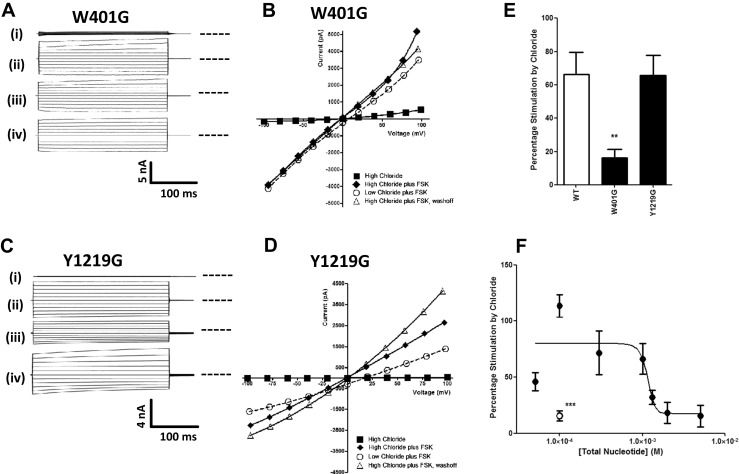Fig. 5.

ATP binding to site 1, but not site 2, underlies [Cl−]o sensing by CFTR. a, c Representative fWCR current recordings measured between ±100 mV in 20 mV steps from HEK cells transfected with W401G CFTR or Y1219G CFTR, as indicated. The current traces are from the top down: (i) unstimulated in 155.5 mM [Cl−]o, (ii) forskolin (FSK)-stimulated in 155.5 mM [Cl−]o, (iii) FSK-stimulated in 35.5 mM [Cl−]o and (iv) FSK-stimulated in 155.5 mM [Cl−]o. Dotted line to the right of the current traces indicates zero current level. b, d Representative I-V plots for the data presented in a and c. e Percentage current stimulation by [Cl−]o for WT CFTR (n = 24) and for W401G (NBD1) and Y1219G (NBD2) mutants (see Fig. 1) (n = 7–8). Data are mean ± SEM. **p < 0.01 compared to WT CFTR. f Percentage current stimulation by [Cl−]o for WT CFTR at different cytosolic (pipette) ATP concentrations. Data are means ± SEM (n = 5–24). Data points fitted using least squares fit of a log [inhibition] vs response equation, with variable slope function and with no constraints or weighting. The open circle shows the effect of including 50 μM P-ATP with 50 μM ATP on the response to [Cl−]o. ***p < 0.001 compared to 100 μM ATP
